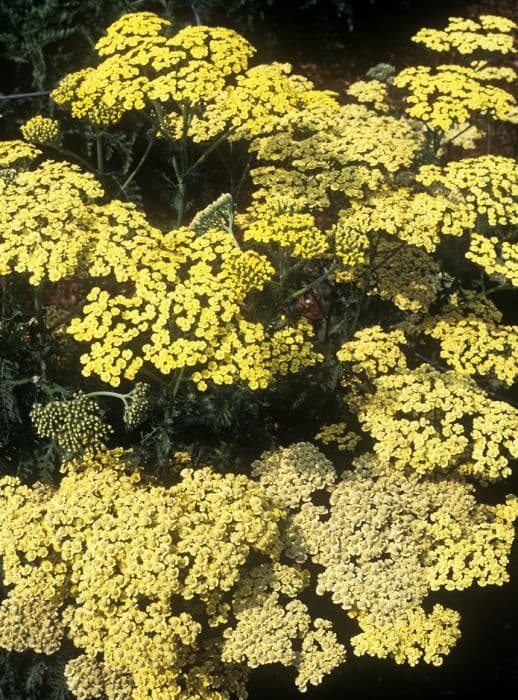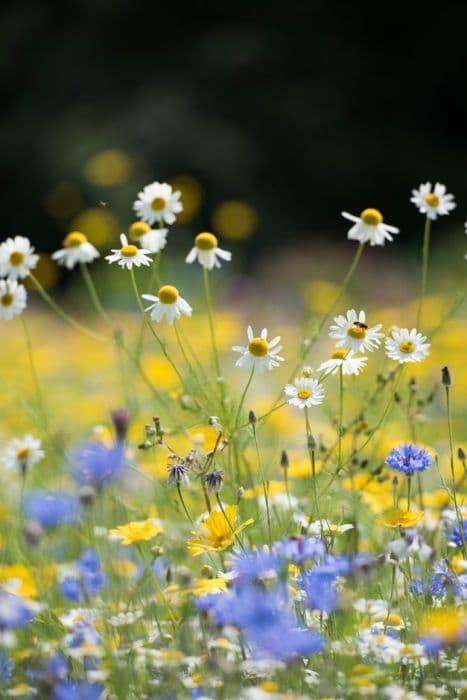Small-leaf Pussytoes Antennaria parvifolia

ABOUT
Antennaria parvifolia, commonly known as small-leaf pussytoes, has a distinct and attractive appearance. The plant is characterized by its ground-hugging mats of gray-green foliage. The leaves are narrow and often covered with fine, downy hairs that give them a soft, velvety texture. This helps to distinguish them from the greenery of many plants surrounding it in its native habitat. The small-leaf pussytoes flowers are also a noteworthy feature. They emerge on short stalks above the foliage and are composed of tight clusters that resemble a cat's paw, which is where the common name "pussytoes" comes from. The blooms can range in color, typically varying from white to pinkish tones. Another notable aspect of the small-leaf pussytoes is the sexual dimorphism displayed by the plant. There are separate male and female plants, and their flowers differ slightly in appearance. While they may not be large or flashy, the blooms of the small-leaf pussytoes add a subtle charm to their growing environment. The overall growth form of small-leaf pussytoes creates a cushion or mat-like appearance, which is particularly appealing as a ground cover in gardens designed with water conservation in mind. Additionally, its tolerance of poor soil and its ability to spread makes it a good candidate for rock gardens or dry, sunny slopes. The soft, muted palette of its foliage and flowers ensures that it blends harmoniously with other plants in naturalistic plantings or wildflower gardens, providing texture and contrast without overshadowing its companions.
About this plant
 Names
NamesFamily
Asteraceae
Synonyms
Small-Leaf Pussytoes, Littleleaf Pussytoes, Small-Leaved Pussytoes, Nuttall's Pussytoes
Common names
Antennaria arida, Antennaria alpina var. media, Antennaria media, Antennaria aprica, Antennaria corymbosa, Antennaria aromatica, Antennaria parvifolia var. media, Antennaria parlinii.
 Toxicity
ToxicityTo humans
Antennaria parvifolia, commonly known as small-leaf pussytoes, is not widely recognized for its toxicity to humans. There is limited information suggesting its ingestion causes adverse effects. However, as with any plant, individual allergies can occur, and it is generally advisable to avoid ingesting plants not known to be edible.
To pets
Small-leaf pussytoes, or Antennaria parvifolia, is not commonly listed as a toxic plant to pets such as dogs and cats. There is no well-documented evidence of toxicity in pets, but it's still recommended to prevent pets from ingesting plants that are not confirmed to be safe, as individual reactions can vary.
 Characteristics
CharacteristicsLife cycle
Perennials
Foliage type
Evergreen
Color of leaves
Green
Flower color
White
Height
1 feet (0.3 meters)
Spread
1 feet (0.3 meters)
Plant type
Herb
Hardiness zones
3
Native area
North America
Benefits
 General Benefits
General Benefits- Drought Tolerance: Antennaria parvifolia, also known as small-leaf pussytoes, is highly drought-tolerant, making it suitable for xeriscaping and water-efficient gardens.
- Low Maintenance: Once established, small-leaf pussytoes require minimal care, making them an excellent choice for low-maintenance landscaping.
- Wildlife Habitat: The plant provides a valuable habitat and food source for wildlife, particularly for butterflies and other pollinators seeking nectar.
- Erosion Control: The dense mats formed by small-leaf pussytoes can help stabilize soil and prevent erosion, especially in rocky or sandy areas.
- Aesthetic Appeal: With its silvery foliage and clusters of small, white flowers, small-leaf pussytoes add texture and visual interest to garden spaces.
- Ground Cover: The plant is effective for ground covering, as it spreads through rhizomes to form a dense carpet that suppresses weeds.
 Medical Properties
Medical Properties- This plant is not used for medical purposes.
 Air-purifying Qualities
Air-purifying QualitiesThis plant is not specifically known for air purifying qualities.
 Other Uses
Other Uses- Antennaria parvifolia, commonly known as small-leaf pussytoes, is used in rock gardens for its texture and drought resistance, providing an attractive ground cover that requires minimal maintenance.
- The downy leaves of small-leaf pussytoes are sometimes used in crafting, for example, as a natural stuffing for small pillows or dolls, thanks to their fluffy and soft texture.
- In landscape design, small-leaf pussytoes is planted to prevent soil erosion on slopes or banks because of its low-growing habit and ability to form dense mats.
- The plant can be used as an indicator of soil health and quality in wild habitats, as it prefers well-drained soils and can suggest the presence of certain soil conditions.
- Small-leaf pussytoes, being resilient to many pests, can act as a companion plant in gardens to help deter pests away from more vulnerable plants.
- The woolly foliage of this plant is occasionally used in floral arrangements to add texture and contrast to more colorful flowers.
- In coarser crafts, such as making wreaths or dried arrangements, small-leaf pussytoes can be used as an everlasting flower due to its ability to retain shape and color after drying.
- The dried stalks and seed heads of small-leaf pussytoes can be used as natural fire starters for campfires because they catch fire easily and burn well.
- Enthusiasts of natural dyes sometimes use the foliage to experiment with creating different shades and colors on wool or fabric, although this is not a traditional use.
- Because of its resistance to foot traffic, small-leaf pussytoes can be planted between stepping stones to create a living pathway that withstands being stepped on.
Interesting Facts
 Feng Shui
Feng ShuiThe plant Antennaria is not used in Feng Shui practice.
 Zodiac Sign Compitability
Zodiac Sign CompitabilityThe plant Antennaria is not used in astrology practice.
 Plant Symbolism
Plant Symbolism- Strength and Survival: It commonly grows in difficult conditions, often in rocky or mountainous terrains, symbolizing the ability to thrive and survive in challenging environments.
- Healing and Restoration: As a plant that features in traditional herbal medicine, Antennaria parvifolia, or the small-leaf pussytoes, often represents healing and the restoration of health.
- Motherhood and Care: With its feminine common name, pussytoes, the plant may also symbolize maternal instincts and the gentle care associated with motherhood.
- Protection: Given how the plant forms dense mats on the ground, it can be seen as a symbol of a protective blanket over the landscape, acting as a guardian of the territory in which it grows.
 Water
WaterThe Antennaria parvifolia, commonly known as small-leaf pussytoes, prefers a well-draining soil that is allowed to dry out between waterings. It's important to avoid overwatering, which can lead to root rot. Water small-leaf pussytoes deeply, but infrequently, providing approximately 1 gallon of water every two weeks during the growing season. During hot, dry spells, you may need to water once a week, while in cooler weather or when the plant is dormant in winter, reduce watering to once a month or less. Always check the top inch of soil for dryness before deciding to water.
 Light
LightSmall-leaf pussytoes thrive best in full sunlight to partial shade. It's ideal to place them in a location where they can receive at least 6 hours of direct sunlight each day. While they can tolerate some shade, too little light may result in leggy growth and fewer flowers. Ensure they're in an area where they can soak up morning sunlight, which is gentler and less likely to scorch the leaves than the intense afternoon sun.
 Temperature
TemperatureSmall-leaf pussytoes are hardy and can withstand a wide range of temperatures, ideally growing in conditions between 60 and 75 degrees Fahrenheit. They can survive minimum temperatures down to -20 degrees Fahrenheit and maximum temperatures up to 80 degrees Fahrenheit, making them well-suited to temperate climates. It's important to provide extra protection or insulation if temperatures dip below the minimum range to ensure the plant's survival.
 Pruning
PruningPruning small-leaf pussytoes is done mainly to remove dead or damaged foliage and to promote denser growth. It's best to prune in the early spring before new growth begins or immediately after blooming to encourage a second flush of flowers. Deadheading spent flowers will also help maintain the plant's appearance. Pruning can be done annually, or as necessary, to maintain the desired shape and size.
 Cleaning
CleaningAs needed
 Soil
SoilSmall Pussytoes prefer well-draining soil with a mix of sand, loam, and compost to mimic their native habitat. The best soil pH for this plant is slightly acidic to neutral, ranging from 6.0 to 7.0. Amending garden soil with perlite or gravel can improve drainage and create an ideal environment for this hardy perennial.
 Repotting
RepottingSmall Pussytoes do not require frequent repotting as they are well-adapted to less fertile conditions. Repotting every 2-3 years or when the clumps become overcrowded will suffice to maintain their health and vigor, ensuring they have enough space to grow and spread.
 Humidity & Misting
Humidity & MistingSmall Pussytoes thrive in a wide range of humidity conditions and do not require any special humidity adjustments. They are tolerant of dry atmospheres, making them suitable for the arid climates they naturally inhabit and adapt well to average outdoor humidity levels.
 Suitable locations
Suitable locationsIndoor
Keep in well-drained soil, bright light, water sparingly.
Outdoor
Plant in full sun, well-drained soil, and water occasionally.
Hardiness zone
3-10 USDA
 Life cycle
Life cycleAntennaria parvifolia, commonly known as the small-leaf pussytoes, begins its life cycle as a seed, typically dispersed by wind due to its light, fluffy structure. Upon finding suitable soil, the seed germinates in the spring and a small seedling emerges, using nutrients stored within the seed to develop its first leaves. As the roots establish in the ground, the plant begins a period of vegetative growth, during which it develops a rosette of leaves and accumulates resources through photosynthesis. In time, the small-leaf pussytoes reach maturity and produce flowering stalks, which are dioecious, meaning individual plants are either male or female. The flowers are pollinated by insects, after which the female plants produce seeds, completing the reproductive stage. The plant may reproduce clonally as well, spreading through stolons (horizontally growing stems) to create a larger colony of interconnected plants, thereby ensuring genetic diversity and resilience.
 Propogation
PropogationPropogation time
Spring
Antennaria parvifolia, commonly known as small-leaf pussytoes, can be propagated most effectively through division. The ideal time for this method is in early spring or late fall when the plant is not in active growth. To propagate by division, a gardener would carefully dig up the plant, ensuring to get as much of the root system as possible. The clump should be gently separated into smaller sections, making sure that each section has a good amount of roots attached. These sections are then immediately replanted at the same depth they were growing at before and watered thoroughly. They should be spaced about 12 inches (approximately 30 centimeters) apart to allow for sufficient room for growth. Consistent watering and a well-draining soil will aid in the establishment of the new plants.









